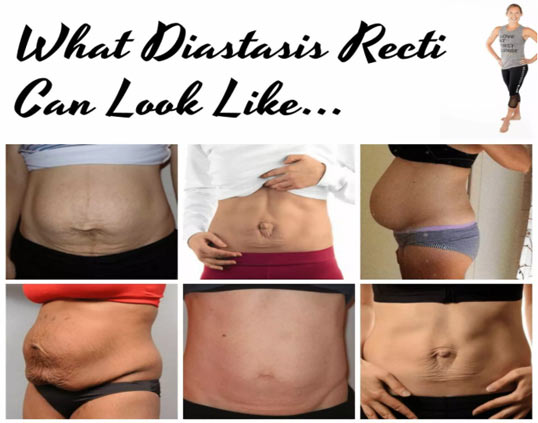Do you know what diastasis recti is? Do you struggle with any issues stemming from this condition? If so, then read on! Many individuals may not know the term ‘diastasis recti,’ but are likely familiar with its effects. Diastasis recti is a separation or widening of connective tissue between the two sides of the front abdominal wall.
This can cause numerous symptoms affecting daily life, such as low back pain and weakness and an aesthetic difference between pregnancy and pregnancy. Even if you are not a parent, diastasis recti can impact your quality of life if neglected for too long due to weakened core muscles. Keep reading to learn more about this common medical condition.
Define the Diastasis Recti
Diastasis rectus is a separation of the abdominal muscles that often occurs during pregnancy and can sometimes happen after childbirth. It occurs when the connective tissue between the two sides of the front abdominal wall (the ‘six-pack’ muscles) becomes weakened or stretched from growing to accommodate a baby. This can cause an aesthetic difference in the abdomen, low back pain, and weakened abdominal muscles.
Diastasis recti can affect people of any age or gender, but it is more common among pregnant women due to the increased intra-abdominal pressure caused by a growing baby. It is estimated that two-thirds of pregnant women will experience some degree of diastasis recti, ranging from mild to severe. In some cases, the gap between the two sides of the abdominal wall can reach up to 3 inches or more in width.
Causes of Diastasis Recti
Several things can cause diastasis recti, but the main culprit is often intra-abdominal pressure. This type of pressure is created when the body works harder than normal to accommodate a growing baby, putting strain on the abdominal muscles and connective tissue that separates them. Other factors that can contribute to the development of diastasis recti include poor posture, obesity, repetitive heavy lifting, chronic coughing or sneezing, and genetic predisposition.
Additionally, when a person engages in certain types of exercise, such as crunches or sit-ups, without proper form or technique, there is an increased risk of developing diastasis recti. This is because the abdominal muscles are further strained despite an attempt to strengthen them due to improper form or technique. Other activities that may contribute to diastasis recti include powerlifting and sprinting.
In rare cases, medical conditions such as Ehlers-Danlos Syndrome can make a person more susceptible to developing diastasis recti, as the weakened connective tissue in their body cannot support the extra pressure of pregnancy.
Ultimately, it is important to be aware of the risks and causes of diastasis recti so that you can take preventive measures if you are at risk or want to avoid developing this condition.
Signs and Symptoms of Diastasis Recti
The most common symptom of diastasis recti is a bulge or gap in the midline of the abdominal area, which can become more pronounced when you strain your core muscles (such as during sneezing or coughing). Other symptoms may include lower back pain, weakened core muscles, and difficulty maintaining correct posture.
Additionally, a person can experience diastasis recti without experiencing any of these outward signs, as the body may be compensating for the weakened abdominal muscles.
Suppose you suspect that you may have diastasis recti. In that case, it is important to seek medical advice from your doctor or physical therapist to properly diagnose and treat this condition. Treatment can include physical therapy, lifestyle changes, and specific exercises to help strengthen the abdominal muscles and connective tissue.
Diagnosis and Treatment of Diastasis Recti
A physical exam usually diagnoses diastasis recti. Your doctor or physical therapist will look for a gap between your abdominal muscles and measure its width with your fingers. Further imaging tests such as an X-ray or MRI may be requested toto better understand the condition.
Prevention Methods to Help Reduce Risk of Developing Diastasis Recti
Several methods can help reduce the risk of developing diastasis recti. The first and most important is maintaining correct form and technique when engaging in any exercise, especially abdominal exercises. Avoiding activities such as powerlifting and sprinting is also important, as these can put undue strain on the abdominal muscles.
Another way to help reduce the risk of developing diastasis recti is to maintain a healthy weight and diet to minimize extra abdominal stress. Additionally, practicing good posture throughout the day is important to support the proper alignment of the spine and core muscles.
Finally, specific exercises can be done regularly to help prevent diastasis recti. These include pelvic tilts, planks, side bridges, and crunches with the correct form. Practicing deep core breathing techniques to engage the abdominal muscles is also important.
Following these steps can help reduce the risk of developing diastasis recti and can help improve the overall health of your core. Additionally, you must talk to your doctor or physical therapist if you suspect you may have diastasis recti to receive a proper diagnosis and treatment plan. By taking preventative measures, you can better protect yourself against developing this condition.
FAQs
Q: How can Diastasis Recti impact my quality of life?
A: Individuals with diastasis recti may experience low back pain, weakness, and an aesthetic difference before and after pregnancy. These issues may disrupt their daily activities and routines, making it difficult to perform everyday tasks. Additionally, individuals with this condition may experience difficulty participating in physical activities, such as exercising or playing sports.
Q: Are there any treatments available for Diastasis Recti?
A: Treatment options are available for individuals struggling with diastasis recti. These treatments include exercises that strengthen the abdominal wall and support the torso and wearing a supportive abdominal belt or binder. It is important to consult with a medical professional before beginning any treatment regimen for diastasis recti.
Q: Are these treatments safe?
A: Yes, when done under the supervision of a qualified healthcare provider, these treatments will be safe and well-tolerated. Your doctor can help you create an individualized treatment plan tailored to your needs.
It is important to note that proper exercise and physical activity is the best way to prevent diastasis recti. Before beginning any new activities or workouts, make sure you have consulted with a healthcare professional to ensure your safety.
Conclusion
Diastasis rectus is a condition that can affect both men and women, whether they have experienced pregnancy-related changes or not. It can cause numerous symptoms, including low back pain and weakness.
Fortunately, treatments available may help improve the quality of life for individuals struggling with this condition. However, seeking advice from a medical professional before beginning any treatment regimen is important to ensure safety. Additionally, proper exercise and physical activity may help you prevent diastasis recti.






